Determinant and indeterminate - what is it and what is the difference?
On packages of tomato seeds, among other characteristics, the type is usually indicated: determinant or indeterminate... What do these words mean and does the type of tomato matter for the successful growing of vegetables?
Content:
- The concept of determinant and indeterminate tomatoes
- Determinant varieties
- Indeterminate varieties
- How to determine the type of tomato
- Which type is better
The concept of determinant and indeterminate tomatoes
Briefly, the difference between the two types of plants can be formulated as follows: determinant are low varieties, indeterminate are high. But height isn't the only difference. Plants of these types differ in the formation of the stem. Determinant, which in Latin means limited, grow until 3 to 5 flower brushes are formed on the stem. Moreover, the last of them is formed at the top of the plant. Further, the growth in height stops. No amount of watering, fertilization and tying will make it grow taller and form several more brushes.
Sometimes gardeners manage to deceive the plant and change its height by directing one of the stepsons up. After all, nothing limits their height. The height of such tomatoes in the garden is about 50 cm, and in the greenhouse they can grow up to 1 m. The number of leaves located between two bunches is less than three. When the inflorescence is formed, the stepson goes up, and the brush moves to the side. A thickening is formed at the place of their connection.
Indeterminate, not restricted in growth, can grow and form flower clusters at a considerable height.
This process is stopped only with the onset of cold weather. The stem is straight, without nodes. The yield of indeterminate varieties is much higher than that of determinant ones. But in this case, the question arises: why grow determinant ones, shouldn't we forget about them and switch to growing tall ones?
Determinant varieties
It is much easier to grow determinate varieties. They are compact and can grow without tying up. Many of them do not need to be pinned (remove side shoots). These are usually early varieties. Their fruits ripen before the massive spread of such a dangerous tomato disease as late blight... Therefore, they require fewer chemical treatments for diseases.
Late hybrids, on the contrary, require more frequent treatments for diseases. This is due to the high load on the low bore. Does not require a film cover. Such varieties are best suited for gardeners who have the opportunity to allocate a large area of the garden for tomatoes, but there is no extra time to take care of the plants.
The determinant varieties themselves are divided into four groups:
- Determinant, stepsons on which it is desirable to remove. It stops growing after the formation of 5-6 brushes.
- Superdeterminate plants of early maturing varieties do not require pinching. Brushes are formed in 1-2 sheets. Stops growing after 5 brushes.
- Super-superdeterminate form clusters without intermediate leaves. Stop growing after 4 brushes have formed. Other names: superdwarfs and super-superdwarfs.
- Semi-determinant ones grow up to one and a half meters. Grown into one stem, removing stepsons. Need a tie. Brushes are formed in 2, sometimes 3 leaves.Stop growing after 10-12 brushes have formed.
The determinant varieties include:
- Oak with fruits weighing about 100 g, sweet and sour taste. The pulp is fleshy. The fruits are intended for salads and canning.
- Alaska - intended for outdoor cultivation. Fruits are small, about 80 g, for salad purposes.
- The sultan is distinguished by rather large tasty fruits, the weight of which reaches 200 g. It is used raw and for processing. Suitable for transportation.
Superdeterminant:
- Agate with fruits weighing about 100 g for universal use. Grown in greenhouses and open field.
- Nevsky is a very early variety (growing season up to 95 days). Fruits are small, weighing about 50 g, light red in color.
Semi-determinant:
- Magnus is a fruitful, disease-resistant hybrid with tasty, harmoniously ripening fruits.
- Chigan with ribbed red fruits weighing up to 280 g.
Indeterminate varieties
If the area under tomatoes small, you can get a high yield by growing indeterminate varieties. But caring for them takes more time and effort. It is necessary to install supports on which to tie the tomato stem. The overgrown top of the stem is periodically tied up. The stepsons are removed.
Tomatoes grow up to 1.5 m in the garden and up to 5 m in winter greenhouses. There they grow and bear fruit for about a year, and the number of clusters formed reaches 50 pieces.
Indeterminate varieties:
- De Barao is a very popular group of varieties that can be red, pink, black, large or small in size.
- Nada is a very early variety. The fruits are slightly flattened, their weight reaches 300 g.
- Star Gold with sweet yellow fruits weighing only 30 g.
- Cherokee, the brush of which consists of 7-9 one-dimensional fruits of bright red color.
How to determine the type of tomato
It is good if you grow your own seedlings, and the type of tomato is known. But sometimes this information is unknown. But you need to know it even before planting seedlings in the ground. This can be done at each stage of tomato development.
Seedlings of determinant varieties have a cotyledonous knee no more than 3 cm long. For indeterminate varieties, this distance is up to 5 cm. Growing in a poorly lit room can be an exception. In this case, several varieties need to be compared. The one with the longer cotyledonous knee is indeterminate.
You can determine the type of tomatoes by their appearance. seedlings... In determinant varieties, the first flower cluster is formed no higher than the seventh true leaf. For the indeterminate, it is above the ninth.
Determining the type of tomato planted in the ground is more difficult due to the fact that often when planting, a significant part of the plant ends up underground.
And most often this happens with indeterminate varieties. If, when planting, the tomato was immersed to the cotyledonous leaves, it is easier to determine the type. In determinant plants, one or two leaves are located between the brushes, in indeterminate ones - three. The determinant ones have shoots that stopped growing after the ovaries were formed, the indeterminate ones will not. When examining, you need to pay attention to whether this is a pinched shoot. Sometimes it looks like one that has stopped growing.
The height of a tomato does not always indicate its type of formation. There are determinant varieties that grow significantly taller than their counterparts. They are taken out for growing in a greenhouse. There are also low determinant varieties. An example is the hybrid "Volgogradskiy 5/95", which has a strong stem and does not need tying.
Which type is better
It is impossible to say unambiguously which of the types tomato it is better. Some of them are more suitable for growing in a greenhouse, others in the open field. Determinant ones require more feeding to help the plant cope with densely spaced brushes. Often you have to spend a lot of time removing stepchildren.
The yield is higher in indeterminate varieties. The determinant ones ripen more amicably, because the brushes are formed after a couple of sheets, and the process ends sooner.
More information can be found in the video:



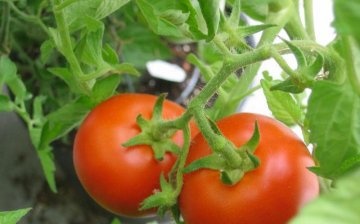
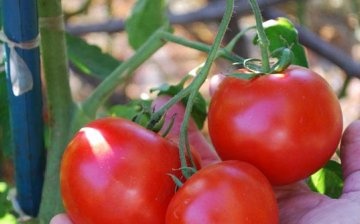
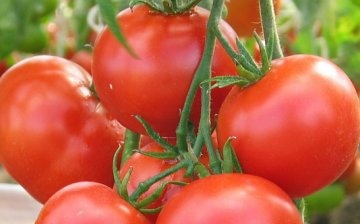
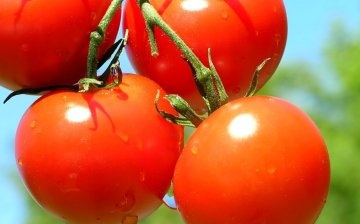
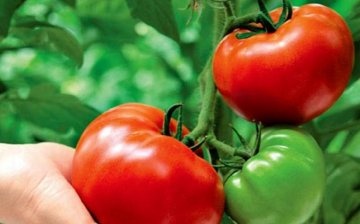
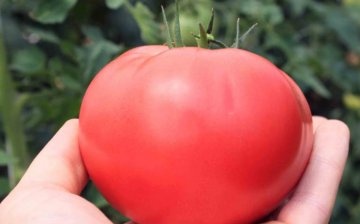






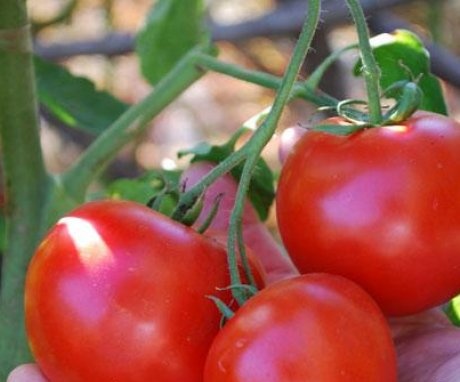
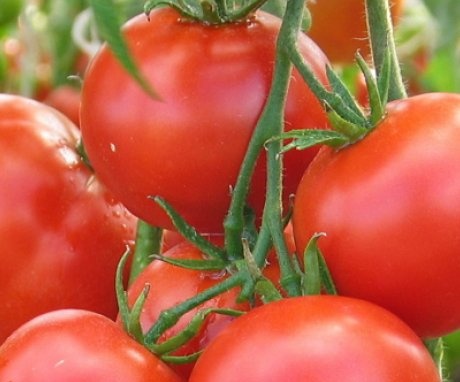

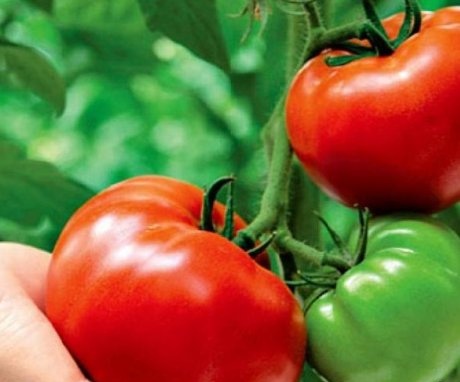
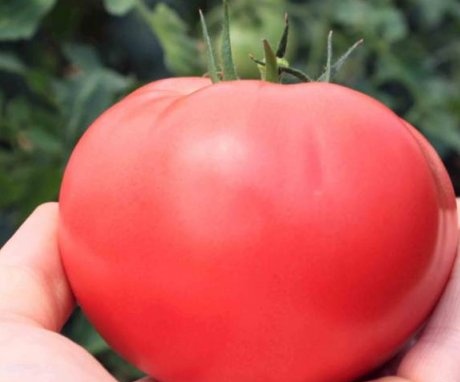
Of course, if you need to get an early harvest, then determinant varieties are better suited for this. In addition, if tomatoes are grown in greenhouses, then, for determinant varieties, smaller sizes of shelters are needed, which also improves the demand for these crops.
Here it is just important to understand that it is useless to plant indeterminate varieties in hot climates, they will grow and grow, and still burn, no matter how you water them, the baby ones bear fruit faster, but they also leave faster
We have been doing gardening for five years already, and for the first time I learned about it from this article. We always checked the varieties empirically: they bought all the varieties, and then, which is better to be born, continued to plant in subsequent years.
I focus more on determinant varieties, perhaps this affects the yield, but it is easier to care for them and it requires less time. I have the opportunity to observe how the neighbors are fiddling with pegs and tying.